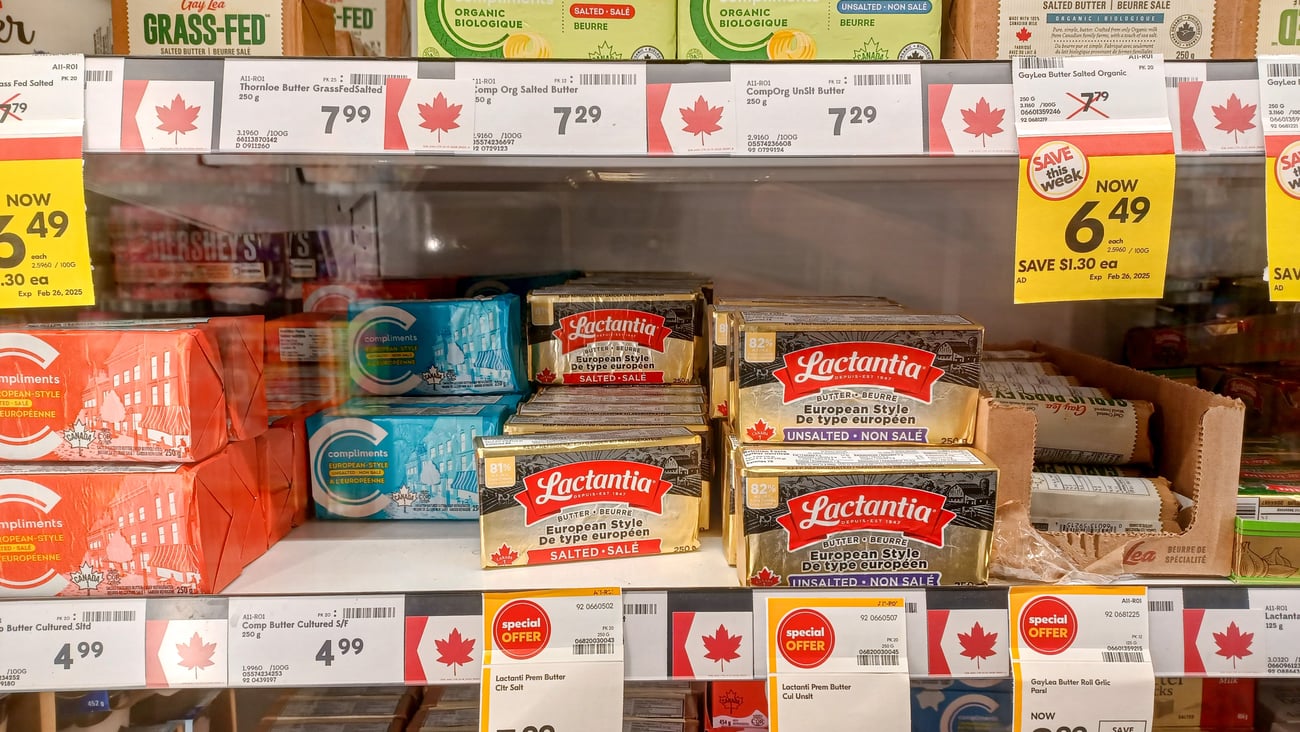Time to tier-up
The stark rise in food prices is affecting how Canadians shop for groceries. While there are several ways for shoppers to save, two stand out. According to Mintel research, nearly eight in 10 Canadian shoppers agree they’re “more willing to switch from [their] favourite brands if it saves [them] money,” with two-thirds going as far as to agree they’re “more willing to compromise on the quality of certain products if it saves “[them] money.” Simply put, most Canadians are willing to make trade-offs.
The willingness of shoppers to make trade-offs highlights the importance of providing different product tiers that give consumers flexibility when it comes to spending more or less, depending on their budgets and needs. In this regard, tiering is a concept that has been particularly relevant to store brands. Retailers, who own the shelves, can blanket stores with their own private-label brands and can tell a consistent narrative that extends across categories. Canada’s three leading grocers – Loblaw, Empire and Metro – each sell different private-label brands that are based on different value propositions. One brand line, for instance, offers products that differ to name brands sold in the same category, while other brands focus on offering products at lower prices but of “requisite” quality.
READ: As prices soar, Canadians find new ways to save
The main benefit for consumers is that tiered brand lines allow for added flexibility. For store brands looking to convey the value that different tiers offer they, ultimately, need to ensure their shoppers understand the contrast. Mintel’s earlier report on private label suggests they do, to where 89% agree “it’s important that grocers offer a variety of store brands at different price and quality levels.”
The importance of clear and cohesive brand standards
While store brands allow retailers to have greater influence across a range of categories, this advantage can also be a challenge. Managing a brand that has thousands of SKUs can quickly become unwieldy. Successful private-label programs need a set of clearly understood standards that product development teams and vendors can turn to. Standards can vary across brands, which makes them all the more important as retailers look to differentiate the product tiers that are sold on shelves.
READ: How brands can better connect with multicultural consumers
A question that can be asked is, can the unique value that distinct brands offer be easily understood by consumers, and do product development teams account for this? For instance, for value brands, what level of quality trade-offs is acceptable to offer cheaper products? For brands that are looking to be different from what’s available in the market, what constitutes being unique? When these questions are factored in, across hundreds if not thousands of products, the importance of having standards that serve as a guide becomes clearer.
Can name brands tier their offerings?
Because of rising prices at grocery stores, store brands have gained more attention. One key way Canadians say they are saving on groceries is “switching to cheaper/budget brands.” Over the longer-term, a reasonable question to ask is, can name brands adopt a tiering strategy like store brands? In this regard, there are factors to consider. First, how would this be done without damaging the existing brand equity that certain brands have built? Second, will consumers easily understand the different tiers associated with different name brands? Remember, grocery stores often sell tens of thousands of SKUs and the average consumer only has so much capacity to consider each purchase they make. Third, are promotional strategies from name brands already “doing the trick” in providing consumers with opportunities to save?
READ: 'Retail has nine lives' in Canada as 2023 consumer spending strong – for now
There is no one easy answer to whether name brands should adopt tiering strategies, of course. But, with value taking on heightened importance as food inflation runs hot, brands and companies should consider exploring different ways to help consumers save according to their needs.
This article first appeared in Canadian Grocer’s June/July 2023 issue.





